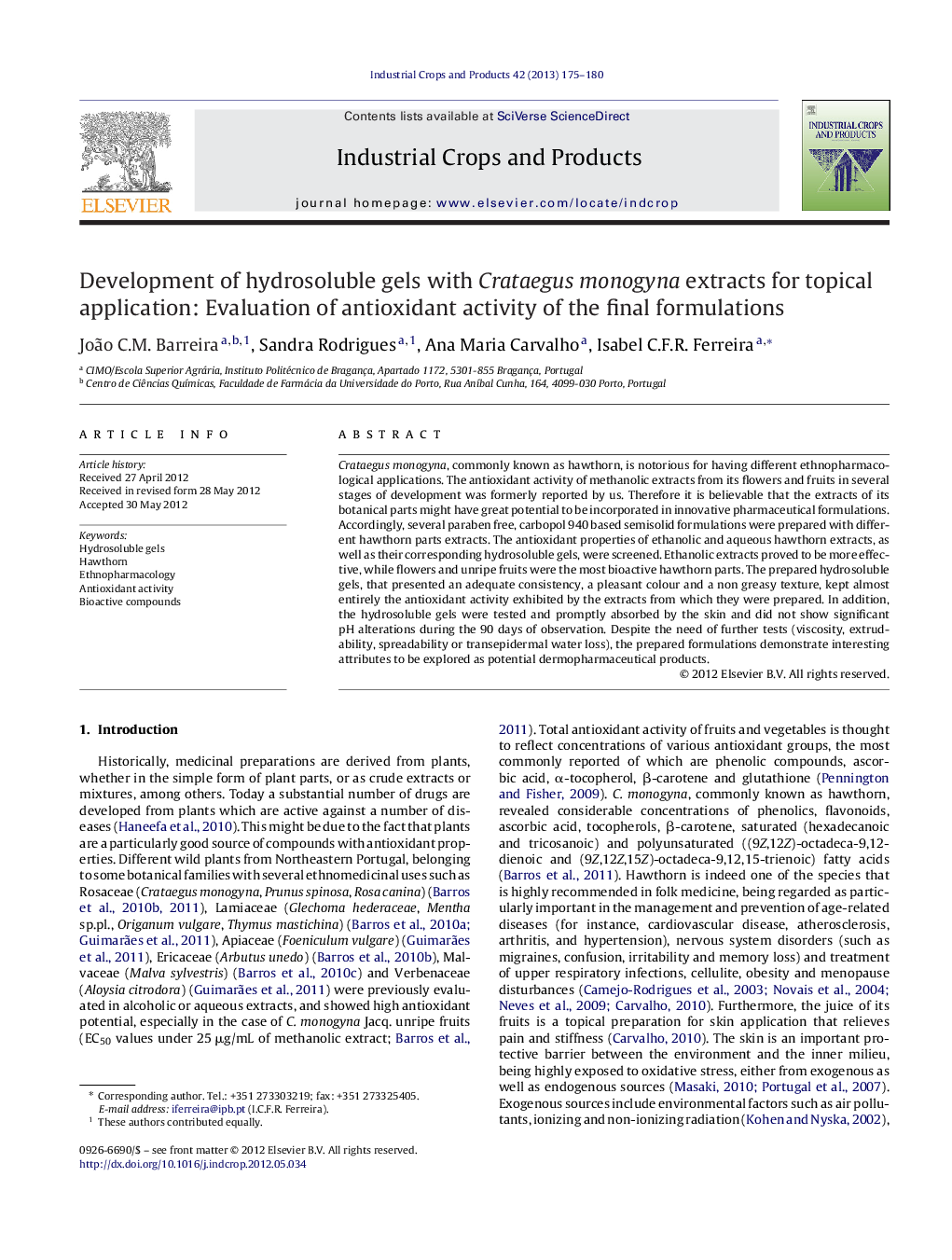| Article ID | Journal | Published Year | Pages | File Type |
|---|---|---|---|---|
| 4513731 | Industrial Crops and Products | 2013 | 6 Pages |
Crataegus monogyna, commonly known as hawthorn, is notorious for having different ethnopharmacological applications. The antioxidant activity of methanolic extracts from its flowers and fruits in several stages of development was formerly reported by us. Therefore it is believable that the extracts of its botanical parts might have great potential to be incorporated in innovative pharmaceutical formulations. Accordingly, several paraben free, carbopol 940 based semisolid formulations were prepared with different hawthorn parts extracts. The antioxidant properties of ethanolic and aqueous hawthorn extracts, as well as their corresponding hydrosoluble gels, were screened. Ethanolic extracts proved to be more effective, while flowers and unripe fruits were the most bioactive hawthorn parts. The prepared hydrosoluble gels, that presented an adequate consistency, a pleasant colour and a non greasy texture, kept almost entirely the antioxidant activity exhibited by the extracts from which they were prepared. In addition, the hydrosoluble gels were tested and promptly absorbed by the skin and did not show significant pH alterations during the 90 days of observation. Despite the need of further tests (viscosity, extrudability, spreadability or transepidermal water loss), the prepared formulations demonstrate interesting attributes to be explored as potential dermopharmaceutical products.
► Crataegus monogyna ethanolic extracts showed antioxidant potential. ► Flowers and unripe fruits were the most bioactive parts. ► Hydrosoluble gels with C. monogyna extracts were developed. ► Hydrosoluble gels kept almost entirely the extracts antioxidant activity.
